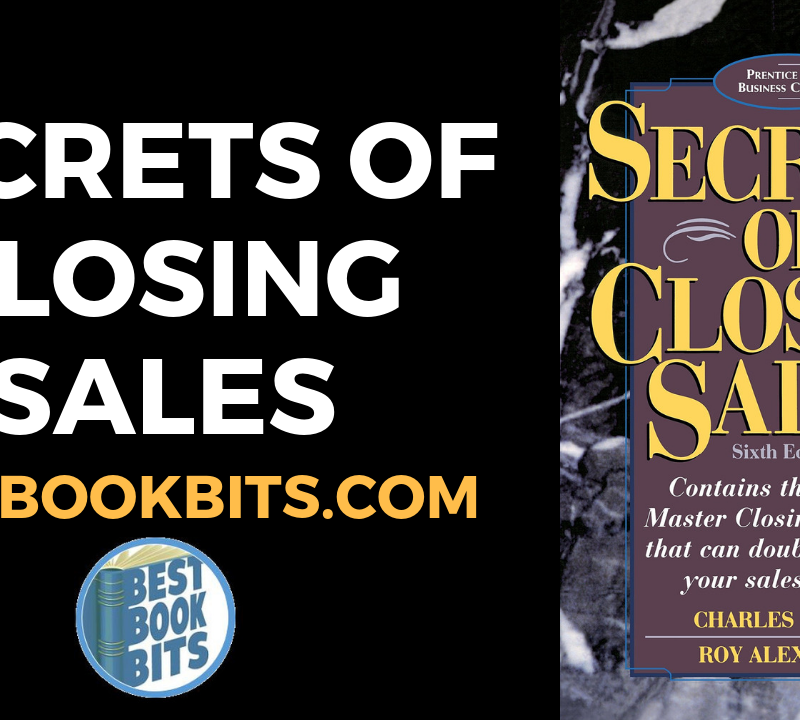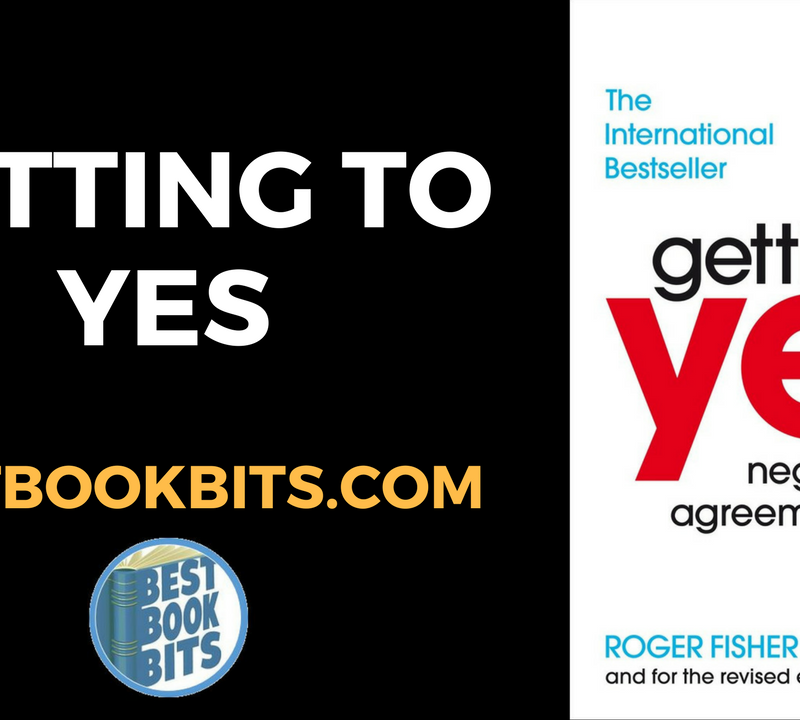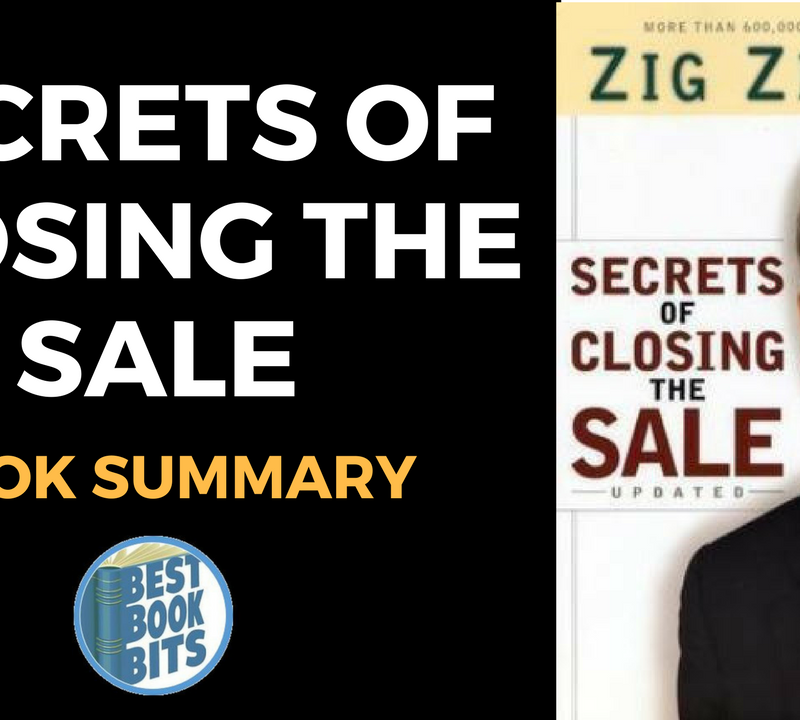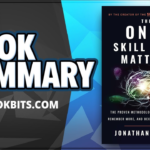★DOWNLOAD THIS FREE PDF SUMMARY HERE
? MY FREE BOOK TO LIVING YOUR DREAM LIFE”
? SPONSOR BESTBOOKBITS BY USING PATREON
? SUPPORT BESTBOOKBITS BY CLICKING THE LINKS BELOW
- 150 PDF Summaries
- Coaching Program
- Subscribe to My Channel
- Website
- Spotify
- Book Club
- Mailing List
- You can profoundly improve your company if you absolutely commit one hour a week in which you do nothing else than work on making the business much more effective.
- We all get good ideas at seminars and from books and business-building gurus. The problem is that most companies do not know how to identify and adapt the best ideas to their businesses. Implementation, not ideas, is the key to real success.
- To do’s, tasks, and deadlines must be assigned after every meeting. But the key is not to ask for too much to be completed. Make the gains small but constant. If you are having the meeting every week and you are making small incremental gains each and every week, think of the profound transformation you’re going to have in 52 weeks.
The 6 steps to great time management
- Touch it once
- If you spend just 15 minutes a day to revisit, readdress or reread documents or emails, you will waste 97 hours per year where no action is taken.
- If you touch it, take action. Don’t open that email or letter until you’re ready to deal with it.
- Make it company policy that insists on very descriptive subject lines for all emails
- Make daily lists of the 6 most important tasks to complete
- Plan how long each task will take
- 6 tasks at 1 hour each is ideal
- Plan the day by assigning time slots for accomplishing each task
- Focus on the difficult projects first
- Even people in reactive positions should still plan realistically for some proactive tasks that can get done each day to move things forward or improve the company or your job.
- Ask yourself “will it hurt me to throw this away?”
- 80% of all files or stored information is never referred to again. So why hold on to it?
10 Steps to Implement Any New Policy
- Get everyone to feel the pain
- Ask how many people in the room would like to solve these challenges. “What if there were ways to solve these challenges but they required you to gain an entirely new learning curve? What if it took a little extra work in the beginning to gain this learning curve, but, once you had it, it would dramatically reduce many if not all of these challenges? How many here would look forward to the new learning curve?”
- Addressing questions like these to the group get’s buy-in
- Also, ask them to write down “what are the drawbacks of not changing or improving this behaviour”. This intensifies their own pain.
- Hold a workshop to generate solutions
- Develop a “Conceptual Solution or Procedure”
- If the team has different answers to questions such as “how do we address customer complaints?”, “how many up-sells do we have and how many different ways do we offer them?”. Then its time to implement a policy that everyone follows.
- Leader or top talent personally performs procedure or task
- Test new ideas with your top performers
- Set a deadline for testing the Conceptual Procedure
- Set a weekly meeting to check progress
- Document step-by-step procedure or process
- Even if your company or department is small, put procedures in place as if you were going to hire 50 new people to take them through it (this forces you to detail every step).
- Have show and tell and role playing
- Have another workshop on how to improve
- Which may reveal great suggestions that were ignored by immediate supervisors
- Monitor the procedure directly
- Record telephone conversations to review. Monitor weekly or daily. Observe and correct behaviour
- Measure and reward the outcome
- People respect what you inspect
The buying pyramid
- At any one time, for any product or service, 3% are buying now
- 7% are open to the idea of buying. They may be dissatisfied with their current item or provider and are not opposed to change.
- The remaining 90% are in 3 categories. The top 1/3rd are not against it, nor for it, just “thinking about it”. They won’t respond to your office equipment ad because they are just not thinking about office equipment right now.
- The next 1/3rd “think they’re not interested”. They are not neutral like the first third, they would reply “I don’t think I’m interest in office equipment.”
- The final 1/3rd are “defiantly not interested”. They are happy with what they have or just simply know they don’t need it. If the 10 year old copier is not broken, why fix it?
- What can you write as your stadium pitch title or ad, that would appeal to the entire pyramid of potential buyers?
- “The five ways our office equipment can benefit you” will only appeal to 10%
- “The five ways you’re wasting money in your operations and administration”. May mot rivet the executives to their chairs but they are not leaving. They will stay to hear a little more. It appeals to everyonein the pyramid because everyone is interested in saving money in their operations and administration costs.
- The hardest thing we need to do today is grab the attention of potential buyers and keep their attention long enough to help them buy your product.
- The approach of offering some education of value to them gives you a significant opportunity to attract more buyers and build more credibility. It’s called “education-based marketing”.
- You will attract way more buyers if you are offering to teach them something of value to them than you will ever attract by simply trying to sell them your product or service.
★DOWNLOAD THIS FREE PDF SUMMARY HERE
? MY FREE BOOK TO LIVING YOUR DREAM LIFE”
? SPONSOR BESTBOOKBITS BY USING PATREON
? SUPPORT BESTBOOKBITS BY CLICKING THE LINKS BELOW
- 150 PDF Summaries
- Coaching Program
- Subscribe to My Channel
- Website
- Spotify
- Book Club
- Mailing List
Tip: When you sell you break rapport, but when you educate, you build it.
The problem with a USP
- The problem with the Unique Selling Proposition is that it is focused on you. It asks the question “what is special about us or what do we have or do better than our competitors?”
- Move from being focused on yourself to being focused on your buyer.
Market data is way more motivational than product data.
- Look for statistical trends over time.
- Use government statistics as the source.
- Look for the “smoking gun” that makes your competitors look bad
How to attract superstars
- Use the highest possible salary in the ad. With average salary’s you will only attract average salespeople.
- When they apply for the job, reject them. If the crumble and go away before you hire them, you see what they are made of. A superstar will question your reasoning and may even tell you that you are wrong.
Even the 3% who are buying now won’t respond to a single direct mail
- Really get their attention.
- Choose your dream 100 prospects and send a quirky gift with a quirky message every month for 6 months. Eg: Rubik’s Cube and the note “Puzzled about how to double or triple employee productivity? We guarantee to find you 12 ways to reduce costs or increase productivity or we’ll give you a $5,000 gift for your trouble” Make follow-up calls.
- If you continue to market to someone with great vigour, they will absolutely get to know who you are. If they tell you no again and again and you keep marketing and selling to them, they will get to know you and feel obligated to give you some business because no one has marketed to them with such force before.
- More gift ideas: flash-light, compass, tape measure
- Keep them inexpensive. Expensive gifts come off like you’re trying to bribe them. Cheap is better, the prospect smiles at the gesture and doesn’t feel bribed
- They should be useful – things they will want to keep or play with or take home for a kid
- The letter that accompanies the gift should be short, should tie into the gift in a clever way. Offer something that they can easily say yes too. With a call to action.
- Phone to follow up after every delivery. The goal is to schedule an appointment to get your core story in front of the prospect. Don’t make the mistake in the letter of saying in a letter “we want to come and present to you”. That’s a much bigger sale to make from a mere letter. Just offer the free report.
Rules for Advertising
- It must be distinctive
- Capture attention with a screaming headline
- After the headline has hooked them, your body copy has to keep them reading
- Don’t make the mistake of focusing on yourself. Unfold the story and make them want to read on. The body should be benefit-oriented. Don’t tell them what it is, tell them why it is valuable
- Include a coupon. It is a noncommittal way of responding. Actually making a phone call means you will have to engage with a salesperson – something you might not want to do at that time. Coupons always increase response over ads that don’t have one.
Brochures
- Most brochures are a waste of money. They are totally focused on you instead of the buyer. They are ego pieces. Instead say something like “The five most dangerous trends facing apartment building owners and how to maximise your apartment building asset”.
Public Speaking
- If you have a powerful core story you will be able to speak at an industry event. But not if you just want to talk about your product or service.
Presentations
- Don’t thank prospects for their time or apologise for taking it
- It show that you consider their time more valuable than yours. It also suggest to them that listening to you is far less important than other tings they could be doing. It belittles everything you have to say. If you do a good job, then they will thank you.
- If using PowerPoint:
- Unfold the information in a way that keeps the audience curious.
- Give them a fact first and follow it with an explanation.
- Continually pre-sell the rest of the presentation throughout the presentation. Keep alluding to information yet to come. Eg “And this means you have some serious competition, but the news gets worse when I show you the next point”.
- Never blatantly pitch your product. You should only use it as an example. But, you can help them set up buying criteria in your favour “What to look for if you need to buy xyz”
Affiliates, reciprocal arrangements
- How can you work with great affiliates? What can you offer their customers and what can you offer theirs?
How to get through to the decision maker
- Use a very authoritative voice. Tell the assistant what to do, do not ask them.
- Another secret is to get the gatekeeper back as many times as you can with very little information. Eg “Can I ask what the call is in reference too?”, “Just tell him its Sheldon calling”. “Just tell him I’m from XYZ company, that might job his memory” “Just tell him I’m following up on some correspondence I sent him, that should be enough”
- When you get through, don’t turn into a salesperson “How are you today?”. Maintain your authority. Have a fantastic 2 minute opening worked out. Be clever, be confident.
7 Steps in Selling
- Establish rapport
- Providing information that helps your client succeed helps you build trust and respect.
- Ask great questions to find common interests and get personal
- Have a sense of humour
- Commiserate
- Be empathetic and care about them. Be more interested in them than anyone else has ever been. If you want to be fascinating, be fascinated.
- Find the common ground
- Mirror body language and tonality
- Qualify the buyer (find the need)
- Find out what they are looking for in your product or service and what factors will influence them to buy. Learn about their current buying criteria, but also reset it so that your product or service is the logical choice
- Develop the 6 to 10 questions that you would like to know about every prospect
- Eg when selling advertising “How do your customers find out about you right now? What’s the most effective way you have for gaining new clients? What’s the amount of your average sale (to cost justify divide the cost of the advertising by the sale price to get the number of sales required to break even). What are the three biggest problems you’re having in [your area of business] – get their pain and help solve it. How long have you worked here? How’d you get started? What are your goals from your company? What are your goals for yourself? What are your criteria for making a decision about buying a product or service like ours?
- Build value
- Teach them something valuable
- Create desire
- Lead them through a series of question in which you intensify their need from their perspective
- Present killer data that truly motivate your buyer to take action now
- Help them to see that their current situation is unacceptable with a combination of problems and solutions with market data and your core story
- Overcome objections
- The idea is to qualify the buyers criteria before you start to sell
- Ask questions such as “what is your biggest marketing challenge? What would it be worth to you if this challenge could be fixed forever? What does it cost you to not fix this problem?
- Always agree with an objection. “Well, that’s certainly a good reason not to invest in this today. [meaningful pause] But let me ask you: Is money the only thing standing between you and the purchase of this product?” If there are more objections they will surface here. If not the client will say “No, if I could afford it, I’d buy it”. This is called isolating the objection. “So if I can find a way for you to afford this product, you will buy it?”
- Close the sale
- If you truly believe that your prospect should benefit from your product or service, it’s your moral obligation to help them make a decision and get on with their lives.
- Follow-up
- Next…
10 steps to great follow up
- Get a letter off to your client within an hour or two of your meeting. Fax it off for extra speed.
Letter structure:- Start with something personal that you remember
- Include a compliment
- Push their hot buttons and stay focused on the benefits your product or service offers them eg “with the challenges you face, it seems clear that six of our machines is exactly what you need. You will reduce costs, speed up productivity and most important, relive a lot of stress for quite a few people. I’m checking how fast we can move on this one.”
- Use a personal close. Eg “Once again, it was great meeting you. I have a few ideas about some other productively issues that I know you will like.”
- Make the first follow up call. You are trying to bond so offer something of value.
- Share something amusing or of personal interest. Don’t sell, just build rapport with a cartoon or article
- Throw a party, share a meal and bond like crazy
- Send another fax/email/letter/card. To get top of mind. Be personal and complimentary and tell them what the next step will be in your relationship.
- Plan something fun that can include the family
- Offer something to help their business. Can you hook up two clients to form a referral network?
- Send another fax/email/letter/card
- Offer more help to succeed. Take them to a seminar? Help them find new personnel, alert them to important trends in their market. Become a valuable asset and trusted confidant.
- The ultimate follow-up: invite them to your home or be invited to theirs
★DOWNLOAD THIS FREE PDF SUMMARY HERE
? MY FREE BOOK TO LIVING YOUR DREAM LIFE”
? SPONSOR BESTBOOKBITS BY USING PATREON
? SUPPORT BESTBOOKBITS BY CLICKING THE LINKS BELOW














